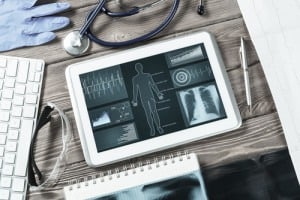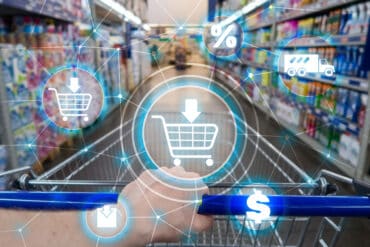
As new tech like wearables and connected medical devices grows in use, how will real-time analytics impact healthcare deliverables?
From ordering groceries online for delivery to using a virtual assistant to create a to-do list, employing connected devices to accomplish daily tasks more efficiently has quickly become the new standard — and the same is becoming true in other rapidly evolving industries.
Healthcare, in particular, has experienced a vast amount of change in the last five years. For example, in the age of all things mobile, virtual visits and real-time patient scheduling are more popular since patient expectations are greater. With the rise of the internet of things (IoT) — estimated to reach 161 million devices in 2020 — wearables and connected medical devices have also grown in use and are providing care outside of the traditional four walls of a clinic.
Now That Data is Being Collected, What’s Next?
As healthcare organizations use more connected devices, electronic health records (EHRs) and virtual visits with patients, the influx of data is pouring in. Today, for many patients, that data continues to sit siloed in large data banks and does not improve their care until it’s been reviewed and filed away for an undetermined time in the future.
More advanced technology, however, is turning wearable devices — merely consumer gadgets three to five years ago — into useful tools that can provide preventive care for patients, such as necklaces or bracelets that measure vital signs and can help diagnose conditions such as hypertension or asthma.
See also: 3 ways AI can relieve the bloated healthcare system
But what if patients were to call into a triage unit with nurses who have access to real-time data about their medical histories, as well as analytics that could guide those nurses to recommendations based on the data and real-time information flowing in throughout the call (or via text message)? That’s the future of patient care in an era marked by digital transformation.
Real-time Data for Diagnosis
With such robust technology now easily accessible, the potential to use such capabilities for early diagnosis of a variety of health conditions is extensive. For example, applying voice communications to diagnose medical conditions can completely revolutionize healthcare in the U.S. today.
Consider the following scenario: Denise is concerned about her mother, Patricia’s, health as she has recently been having issues with memory loss. Patricia calls into her clinic’s nurse triage line where her nurse asks five questions to gather information for diagnosis. The analytics that are detected from Patricia’s voice communication with the nurse, combined with the health data captured from her wearable device (that the nurse can view in real time), help the nurse determine a diagnosis of Alzheimer’s disease that is within a high degree of probability. As a result, this interaction helps Denise determine next steps for her mother’s health care.
With a plethora of connected devices available today, something as simple as voice communications being used to diagnose (or determine the probability of diagnosis) is the ultimate medical bot.
Although the idea may seem futuristic, using analytics in voice communications for the early diagnosis of certain medical conditions is actually close to today’s reality. For instance, Apple just released their new Apple Watch Series 4 with an Electrocardiogram (EKG) feature — providing consumers with information about their heartbeat that can help alert them to undiagnosed conditions. The real-time data provided by wearables like the Apple Watch can serve as a first step in diagnosing certain health conditions and alerting patients to consult with their provider when data signifies that something is amiss.
Analytics’ Role in Early Detection of Medical Fraud
One of the major issues in the healthcare industry today is the amount of medical fraud that occurs. In 2017, for example, there were $1.3 billion in false billings, according to the Office of Inspector General of the U.S. Department of Health & Human Services. Analytics can play a significant role in detecting medical fraud as well as aiding in the early diagnosis of medical conditions.
Imagine a medical call center using voice analytics technology during a call from a patient who is attempting medical fraud. With analytics embedded in the software, red flags in the patient’s tone of voice could be pinpointed. The person handling the call could then be alerted to the concern signified through the analytics, allowing them to investigate the situation at a deeper level. Analytics could one day play a key role in the early detection of medical fraud – alerting organizations to potential fraud as early as the appointment scheduling process.
The real-time potential for analytics to alleviate a variety of challenges in the healthcare industry today is enormous. With all the headway that has been made in the creation of new technology to catapult healthcare into the next generation of patient experience, it is only natural that the deployment of real-time analytics for early medical diagnosis and detection of fraud will follow.


![Sponsored Resource: Enhancing Intelligent Real-Time Monitoring with Streaming Analytics Using Real-Time Digital Twins [Download Now]](https://no-cache.hubspot.com/cta/default/8019034/68465e27-def5-49e0-953f-88df4c33b69c.png)

























